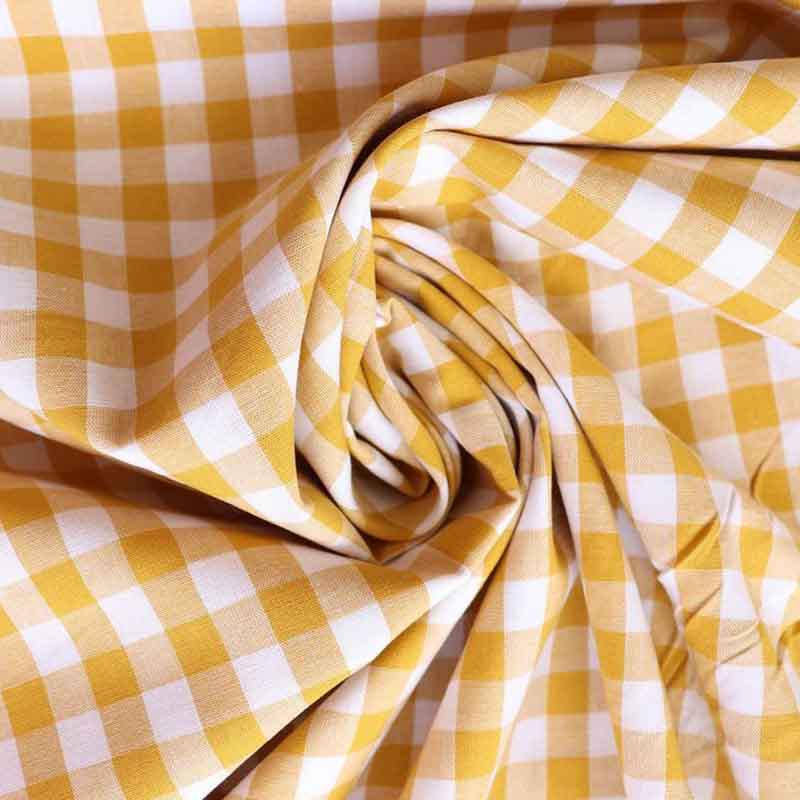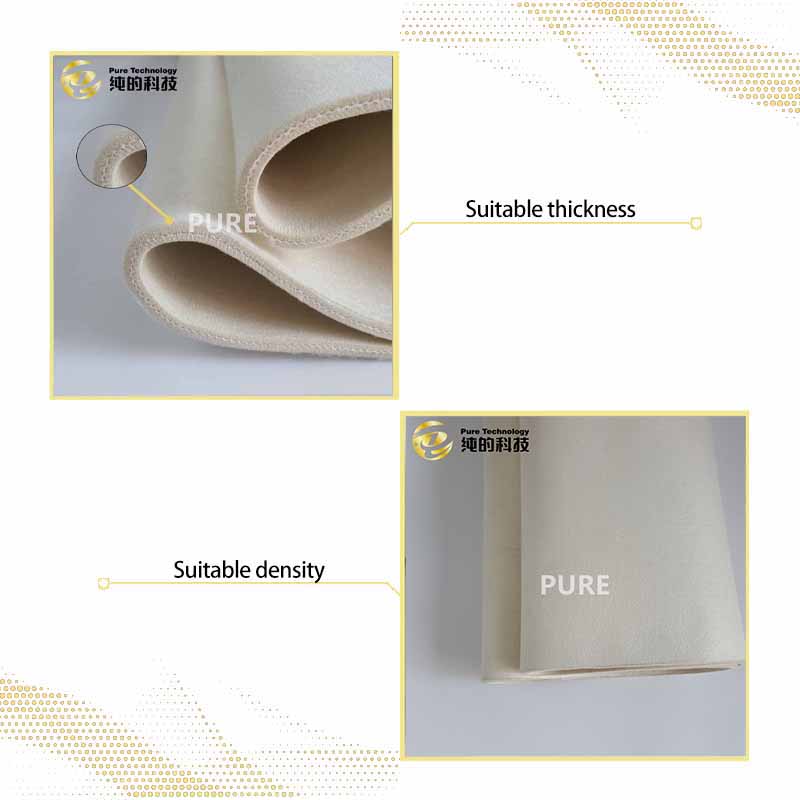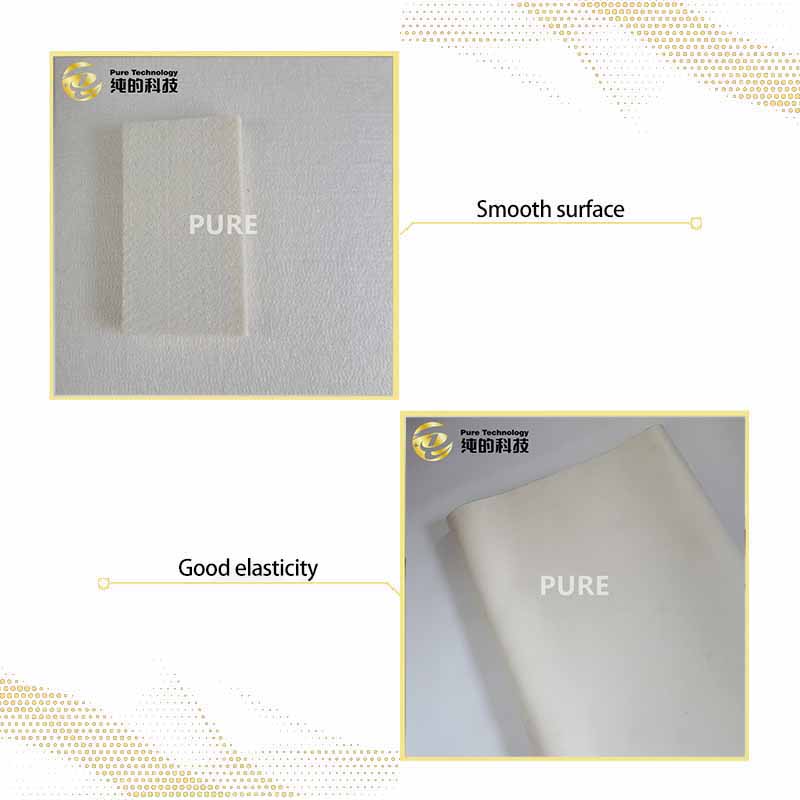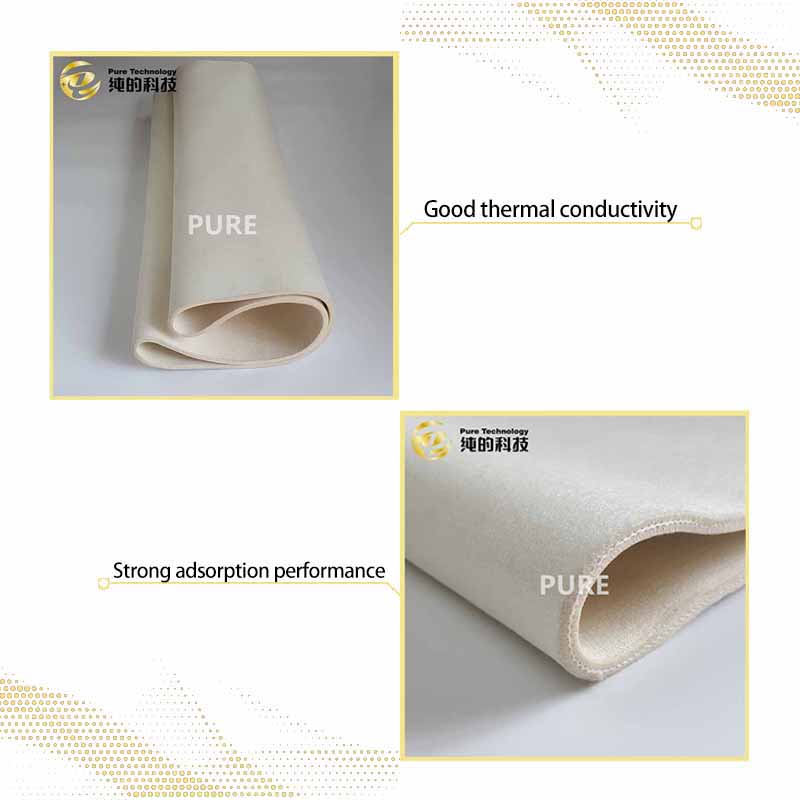Heat transfer printing is a textile printing technology that quickly and efficiently transfers various complex and unique patterns onto products made from different materials.
The patterns printed by thermal transfer printing technology are brightly colored, rich in layers, and high in definition
which can significantly improve the appearance quality and visual effects of the products.
In the complex and elaborate thermal transfer printing process, the heat felt conducts pressure and evenly distributes heat.

Different heat transfer materials have different physical and chemical properties. Natural fiber felt has good hygroscopicity and can easily absorb water vapor from the surrounding environment.
This will affect the humidity environment during the thermal transfer printing process and thus influence the ink’s color performance.
Suppose the material’s hygroscopicity is too strong. During the heat transfer process, the ink on the transfer paper may get damp, affecting its sublimation effect and resulting in lighter printing colors or color bleeding.
Compared with natural felt, Nomex felt has weaker hygroscopicity. For thermal transfer printing inks, drying, and sublimation have specific conditions.
Nomex felt can transfer the ink onto the fabric very well, presenting the printing colors perfectly.
There are differences in thermal conductivity, wear resistance, and other aspects between natural fiber felt and synthetic fiber felt.
Nomex felt can withstand the friction generated during multiple thermal transfer printing processes, is not prone to wear and deformation, and ensures that the pressure transmitted each time is consistent.
In terms of thermal conductivity, high temperature felt can conduct heat well, making the temperature rise more rapidly and evenly and providing a stable environment for the sublimation of the ink.
An inappropriate thickness of the heat transfer felt can change the transmission effect of pressure and the distribution of temperature.
An overly thick heat felt will weaken the conduction of pressure and temperature, requiring an extension of the transfer time to achieve the same printing effect.
On the other hand, an overly thin heat transfer felt may lead to excessive pressure, damaging the fabric fibers or causing an uneven penetration of the ink on the transfer paper.
The transfer of heat in the heat felt is mainly through the mode of heat conduction. An overly thick heat felt will lead to a reduction in the efficiency of heat conduction and a slower rate of temperature rise.
The density directly affects the elasticity and wear resistance of the heat felt.
Heat felt with too high a density will lose its elasticity, which may lead to the deformation of the printed pattern or the blurring of its edges.
On the other hand, heat felt with too low a density will lose its wear resistance. The heat felt with weak wear resistance is prone to damage and will affect the transmission of pressure and temperature during the use process.
During the needling process, as the number of needling times increases, the density of the product gradually increases. When it reaches a certain value, the density and diameter no longer change.
This means that in the printing process, the density of the heat transfer printing felt needs to be controlled within a suitable range to ensure the clarity of the printed pattern and the durability of the felt.

If the surface of the heat transfer printing felt blanket is not flat,
the pressure cannot be evenly distributed on the fabric
and the transfer of paper during the thermal transfer printing process.
This will result in insufficient ink transfer in some areas of the printed pattern,
while in other areas there may be excessive transfer causing the colors of the printed pattern to be inconsistent in shade and the thickness of the lines to be uneven.
The uneven heat felt may cause breaks or blurring of the lines, seriously affecting the clarity and accuracy of the printing.
The heat felt with good elasticity can deform normally under pressure, thus fitting better with the fabric’s surface and ensuring that all parts of the printed pattern can have sufficient contact with the fabric.
The heat felt lacking in elasticity when encountering an uneven or wrinkled fabric surface is unable to fill the gaps
resulting in blank areas or overly light colors in some parts of the printed pattern.

The key to thermal transfer printing lies in precise temperature control, which prompts the sublimation of the ink on the transfer paper and its transfer onto the fabric.
The thermal conductivity of the high temperature felt plays an extremely crucial role.
High-quality felt, with good thermal conductivity, can quickly and evenly distribute heat across the entire transfer area, ensuring high-quality print colors.
Poor-quality felt thermal conductivity will lead to uneven temperature distribution, and the prints are prone to deviations where the local colors vary in shade, thus affecting the overall effect and aesthetics of the prints.
During the thermal transfer printing process, there may be some ink volatiles or impurities on the surface of the fabric fibers.
The fibers of the heat felt with good adsorption performance have a large number of pores that can absorb these impurities and remove them before the impurities come into contact with the ink
preventing them from affecting the printing quality and ensuring the clarity and integrity of the details of the printed pattern.
If the heat felt has poor adsorption properties, these impurities may get mixed into the ink, resulting in spots on the printed pattern or impurities in the color.

The heat transfer printing process involves high temperatures and requires extremely high chemical stability.
Materials like Nomex felt, which have excellent high-temperature resistance and chemical stability, can be the first choice.
Meanwhile, attention should also be paid to the hygroscopicity of the heat felt, because the heat transfer printing environment has high requirements for the conditions of drying and sublimation.
Also, pay attention to the performance indicators of the heat felt, such as its thickness, density, flatness, elasticity, thermal conductivity, adsorption performance, and so on. Coupled with correct use and regular inspection and replacement, the details and colors of the printed pattern can be presented perfectly.
Want to know more tips on choosing good heat felt? Read this article
[How to Buy the Most Suitable Heat Transfer Felt]
As we know, Heat Transfer Printing Felt is suitable for fabrics, decorative fabrics, curtains, le...
Read Safety Rules for Laundry Management to be a qualified manager. PARTⅠ Laundry room Safety Gen...
The extrusion machine is the leading equipment for the production of aluminum profiles. The quali...
Heat transfer printing is a contemporary printing process in the clothing market. It prints the p...
In the textile industry, felt is only a small part but important. About how to choose felt that i...
Foshan Pure Technology Company., Ltd. helps conveyor belt manufacturers source equipment to metal...
Nomex, an intermediate aramid, also known as aramid 1313. It is characterized by good heat resist...
In the 1960s, the Dupont developed a kind of aramid composite material, it is Kevlar. It has very...